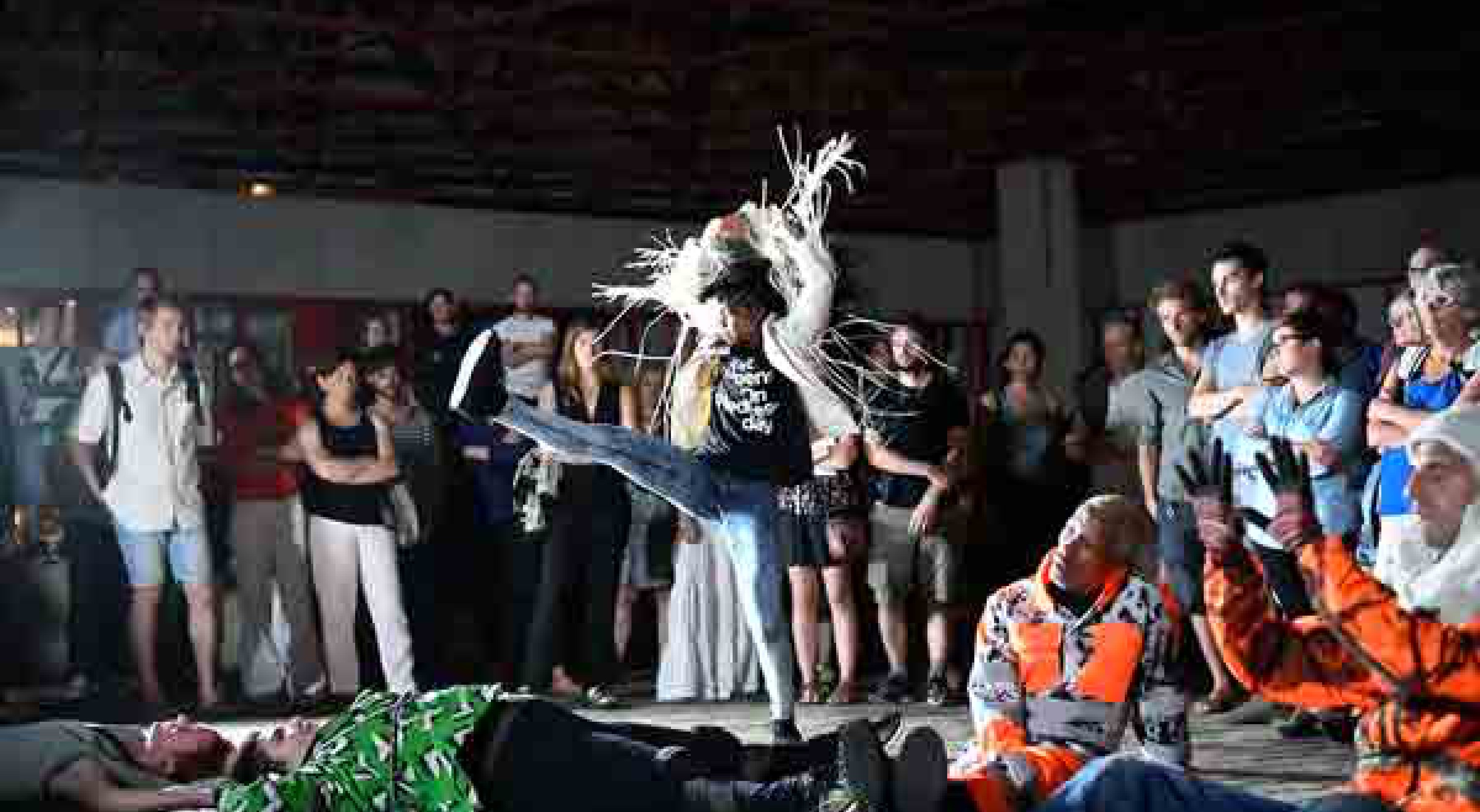Boris Charmatz
danse de nuit
octoberoct 7 – 9
octoberoct 12 – 13
Choreography, Boris Charmatz
With Ashley Chen, Julien Gallée-Ferré, Peggy Grelat-Dupont, Mani A. Mungai, Jolie Ngemi, Marlène Saldana and Olga Dukhovnaya or Frank Willens alternatively
Lighting designer, Yves Godin
Costume designer, Jean-Paul Lespagnard
Sound design, Perig Menez
Vocal work, Dalila Khatir
Stage manager, Fabrice Le Fur
Dresser, Marion Regnier
Tour rehearsal coach, Magali Caillet-Gajan
Production directors, Sandra Neuveut, Martina Hochmuth, Amélie-Anne Chapelain
A Musée de la danse production / Centre chorégraphique national de Rennes et de Bretagne // With support from Fondation d’entreprise Hermès in the framework of its New Settings programme // A Théâtre National de Bretagne-Rennes coproduction; La Bâtie-Festival de Genève ; Holland Festival (Amsterdam) ; Kampnagel (Hamburg) ; Sadler’s Wells (London) ; Taipei Performing Arts Center ; Onassis Cultural Centre-Athens ; Théâtre de la Ville-Paris ; Festival d’Automne à Paris // In association with Musée du Louvre (Paris) ; Théâtre de la Ville-Paris ; Festival d’Automne à Paris for performances au Musée du Louvre // In association with MC93 – Maison de la Culture de Seine-Saint-Denis (Bobigny) ; Festival d’Automne à Paris for performances at Friche industrielle Babcock // With support from La Courneuve and Plaine Commune for performances at Friche industrielle Babcock // With thanks to Rosas, WIELS Centre d’Art Contemporain (Brussels) // First performed on 2 September 2016 at La Bâtie-Festival, Geneva
What are those dancers doing, out there, on the concrete, surrounded by all the din of the city? Shouldn’t they be on a stage somewhere, in a theatre, away from the wind, rain and cold? And what exactly is a “danse de nuit”. Is it a party, procession, demonstration, or a nocturnal battle? Or is it some sort of night-time dance in a round, held in secret, away from the light? Is it the inverse of a daytime dance? A clandestine, hidden away dance. Forbidden territory, perhaps? Following on from the trilogy comprising Levée de conflits, enfant and manger, three vast choreographic structures which made use of a layering effect of actions and constraints, Boris Charmatz comes back to a streamlined formation, featuring dance, speaking and movement at their most condensed level. He also draws upon the intensity of urban dance, but in a way which breaks down or disarticulates all its codes. Continuing, here, his research at the junction between movement and voice, he connects these talking bodies to an amplifier, which has a direct link with the outside world. The danse de nuit could be seen as a commando group of dancers on the frontiers of the public space, on a mission to push themselves to their limits, reflecting any contradictions they encounter. In group formation or every one for themselves, they attempt to articulate something, anything about our situation, and to make a “state of emergency” come alive in their bodies. A shared sense of intensity develops, circulates. Fragments of words and phrases spring forth... even to the point of blurring, and creating misunderstanding. What becomes apparent is the urgent need to reoccupy this space which has been confiscated by State logic. Situated somewhere between Greek agon and agony, contradictory outburst and funeral march, wild remix and ephemeral dance, danse de nuit can be deciphered as a hastily-scribbled drawing, an unfinished graffiti on a wall, the slogan of which reverberates well into the night.

